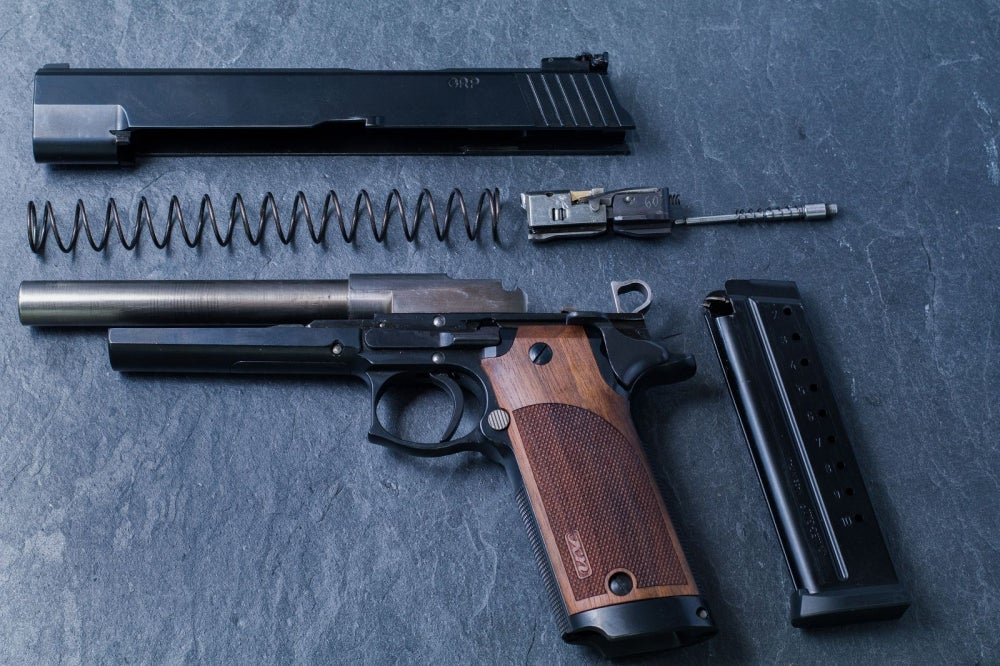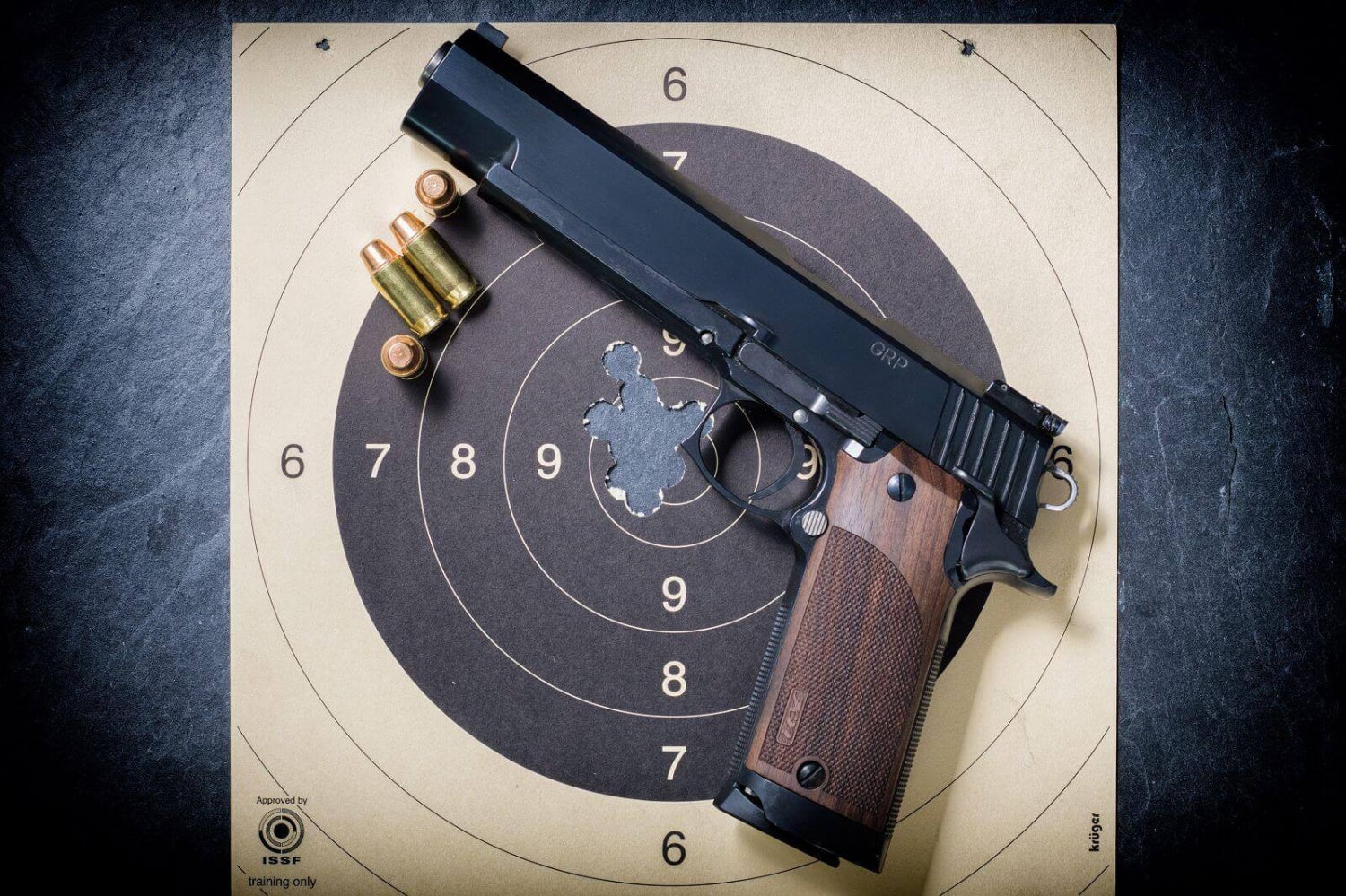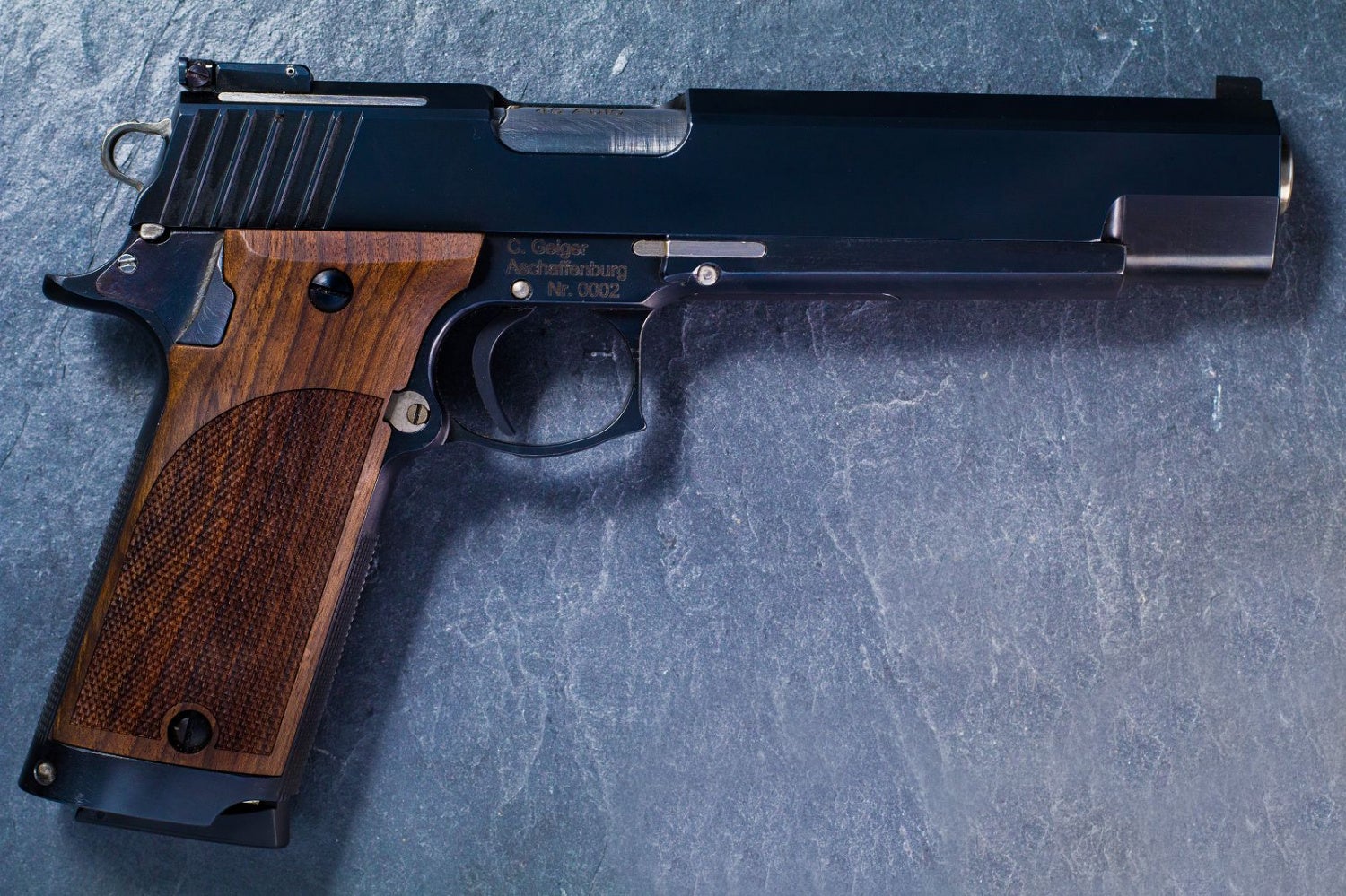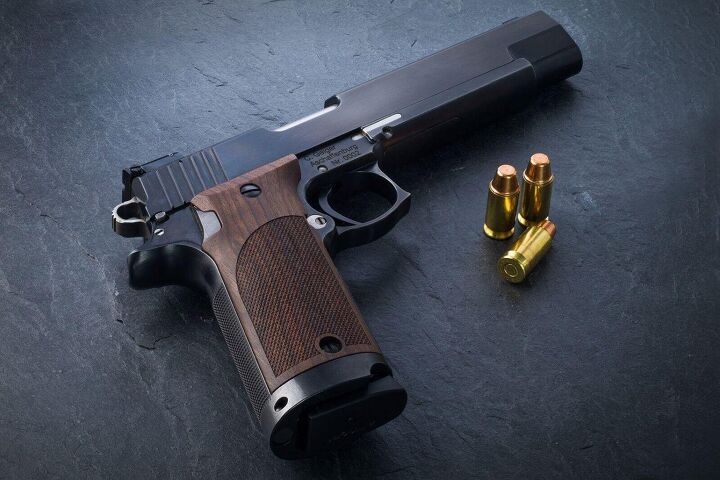When you hear roller delayed blowback, you probably think about Heckler & Koch because the G3 rifle and its derivatives such as the ever-popular MP5 are the family of firearms most known for successfully utilizing this operating mechanism. In handgun designs, this system was less successful with the only pistols using it that I am aware of being the H&K P9, Korth PRS and Korriphila pistols. Well, it looks like this system is still being experimented with in Germany and in this article we’ll take a look at German Geiger GRP roller delayed blowback pistol.

This pistol is designed in a German company called Clemens Geiger Technische Entwicklungen. Clemens Geiger, the designer of the pistol, has been working on it since 2002. The model designation GRP stands for Geiger Rollenverschluss Pistole which translates Geiger Roller-Locked Pistol. Now, apparently, in German, both roller locked (e.g. MG42, Vz. 52) and roller delayed blowback (G3, MP5) systems are referred to with the general term Rollenverschluss and in order to distinguish the two, you need to specify whether you mean the system with fully locked or moving rollers.

As seen in the above-embedded image, the Geiger GRP has a fixed barrel and a typical roller delayed blowback bolt that is separate from the slide. The way it works should be similar to any roller delayed blowback mechanism where the rearward pressure of the fired cartridge is transferred via the rollers from the bolt to the bolt carrier. The result is a delayed rearward motion of the bolt which prevents the premature opening of the breech yet still passes the energy of the fired cartridge to the bolt carrier which then cycles the action. The advantage of using this mechanism is that you can have a fixed barrel (which with other variables being equal should make a more accurate firearm) with a much lighter mass of reciprocating parts than it would be in case of using the simple/direct blowback system.

The barrels of Geiger GRP pistols feature polygonal rifling and the bores are hand lapped. The pistols are available chambered in 9x19mm (GRP200) or .45 ACP (GRP201). The barrel length for both caliber options is 149mm (5.85″). The recoil spring is located around the barrel. The Geiger GRP pistols also feature built-in slide buffers, adjustable rear sights, manual and automatic safeties, and can be disassembled without a use of tools. The GRP pistols are fed from 1911-pattern single stack magazines of 10 or 8 round capacity for the 9mm and 45 Auto versions respectively. These pistols weigh 1,300 grams (about 46 oz) and have the following dimensions: 245mm (9.65″) x 35mm (1.37″) x 146mm (5.75″). Here is a video showing the disassembly of the pistol. I couldn’t find any information telling if the chambers are fluted – a feature normally seen in delayed blowback firearms that aids the extraction.
All components of the Geiger pistols are made in house and all of them are machined out of billet steel. For example, the frame of the pistol starts as a 6.5 kilogram (14.3 lb) block of steel and after all the machining processes are completed, the final frame weighs 600 grams (1.3 lb). The company also notes that no sheet metal or MIM cast parts are used in the design. Here is another video showing the assembly of GRP pistols.
In Europe, the exclusive retailer of Geiger GRP pistols is a company called B&H Waffenhandel which has these pistols listed on their website at a price point of €4,999 (about $5,386 by current conversion rates).

To me, although for most of the applications the good ol’ Browning tilting barrel design is good enough, it’s still extremely interesting to see companies and designers experimenting with different systems in an attempt of reaching better results and pushing the boundaries of any particular firearm type. I think if such a roller delayed blowback pistol is made of less expensive materials and with the use of cost-saving manufacturing techniques, it will be possible to price it at least in par with semi-custom 1911s which would drastically expand the potential customer base.
Images from www.cgte.de
 Your Privacy Choices
Your Privacy Choices
